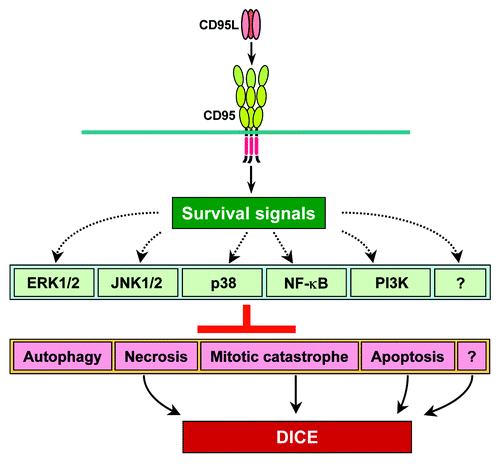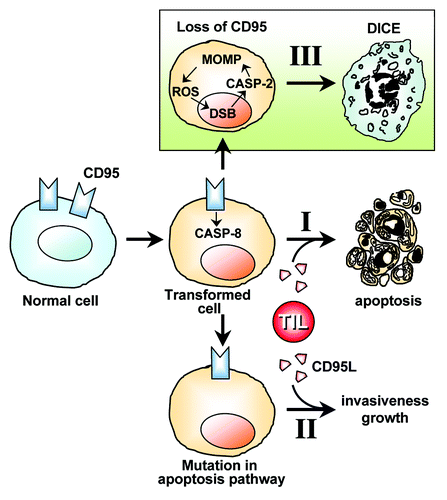Figures & data
Figure 1. Model of how CD95 protects cancer cells from cell death. CD95 acts as a lynchpin to ensure a low level of signaling through multiple survival pathways. When either CD95 or CD95L is eliminated, cancer cells undergo DICE by activating multiple cell death pathways.

Figure 2. Hypothesis on the physiological relevance of DICE. CD95L-induced apoptosis is one of the mechanisms that tumor-infiltrating lymphocytes (TILs) employ to eliminate transformed cells (I). If CD95 engagement fails to induce apoptosis due to cancer cells acquiring mutations of components of the apoptosis pathways, then cancer can develop. These cancer cells now benefit from the CD95L expressed by themselves and, presumably, by TILs (II). Transformed cells and cells in rapidly proliferating tissues under conditions that can lead to neoplastic transformation (e.g., compensatory proliferation of liver tissue) must receive a low level signal through CD95 to survive. If CD95 or its stimulating ligand are completely removed, then cells die by DICE (III). According to this model, CD95 and CD95L are part of a fail-safe mechanism to prevent the occurrence of CD95-deficient cancer cells that can no longer be targeted by immune cells via CD95L. TIL, tumor-infiltrating lymphocyte secreting CD95L. DSB, DNA double-strand breaks.

